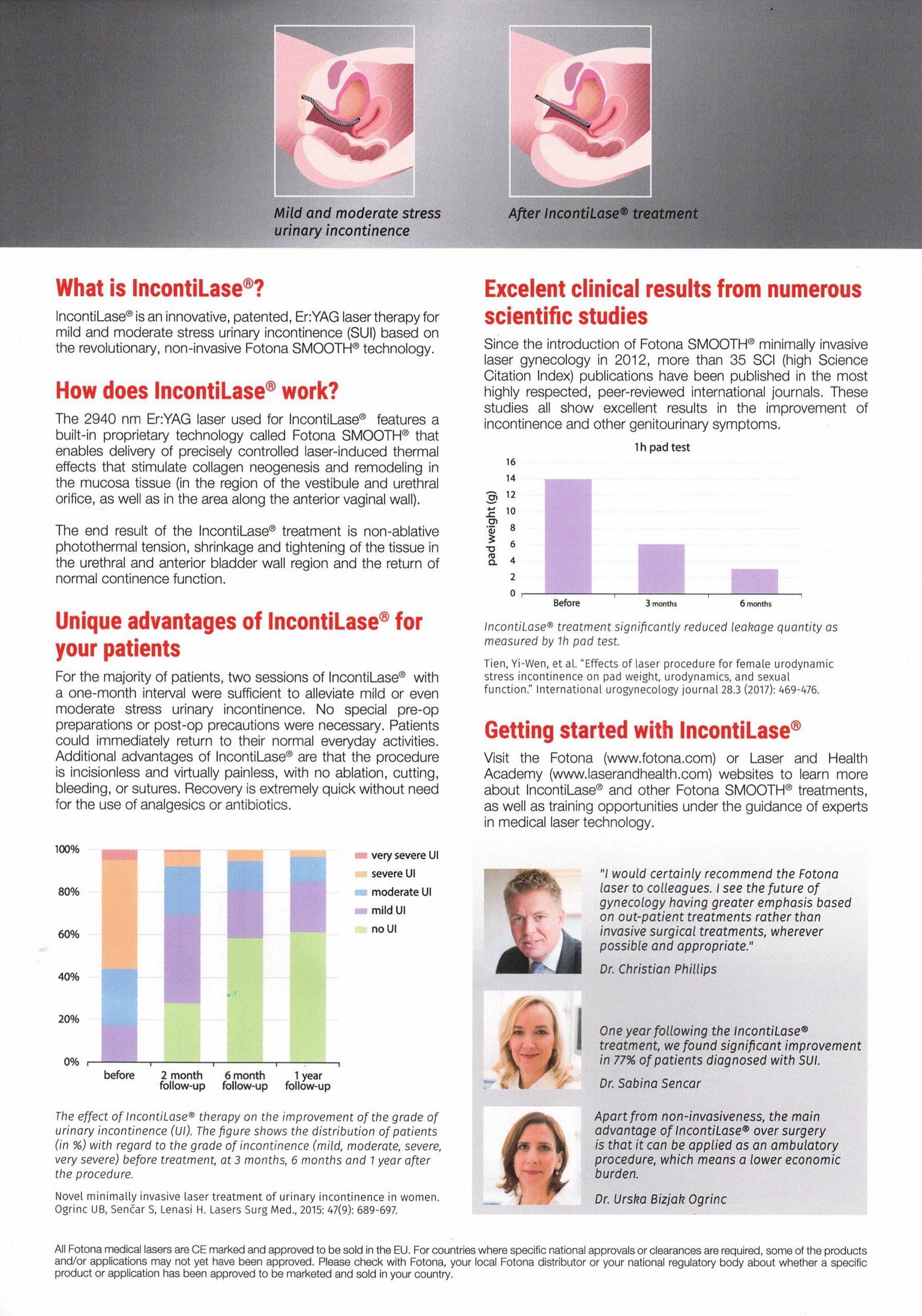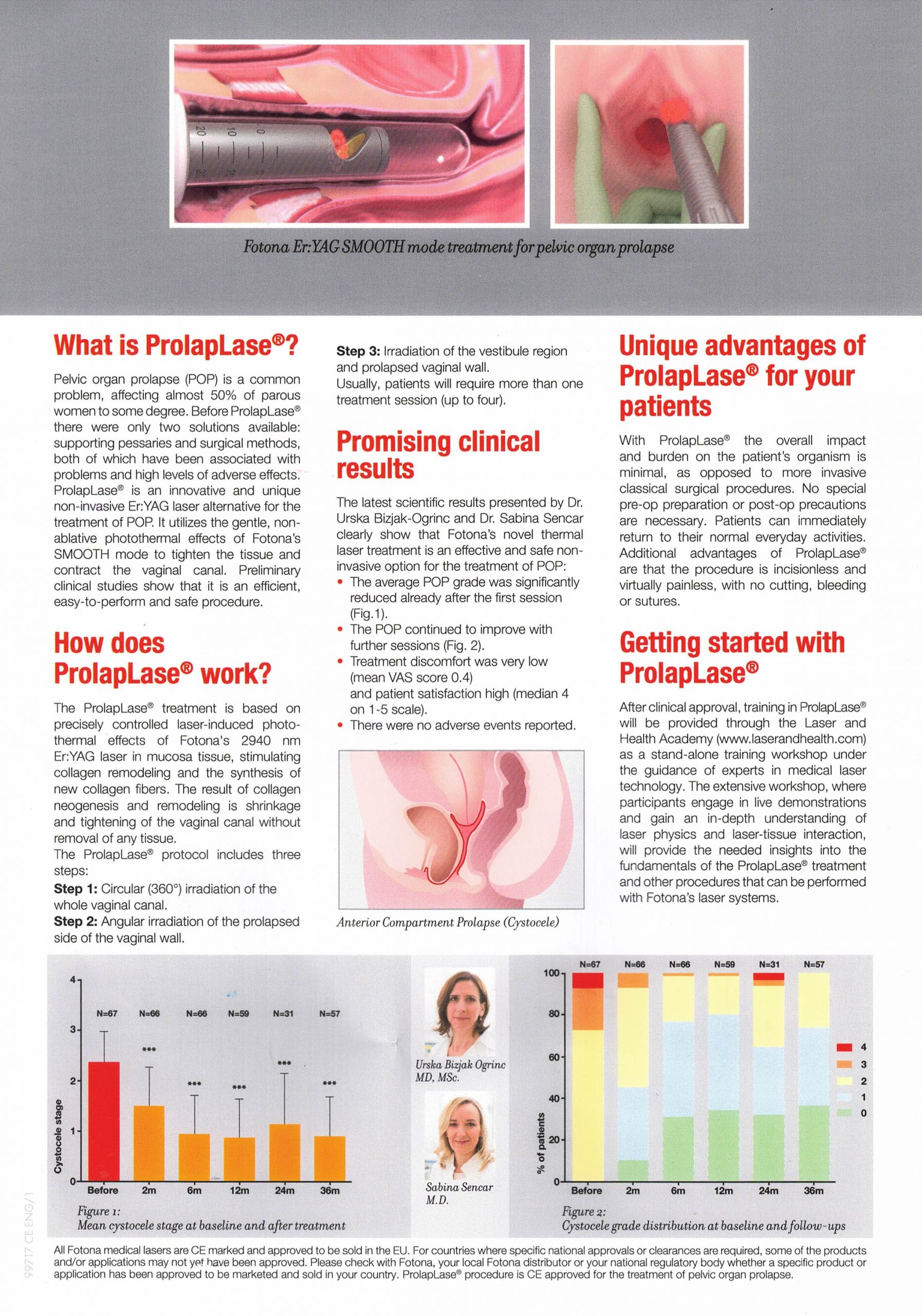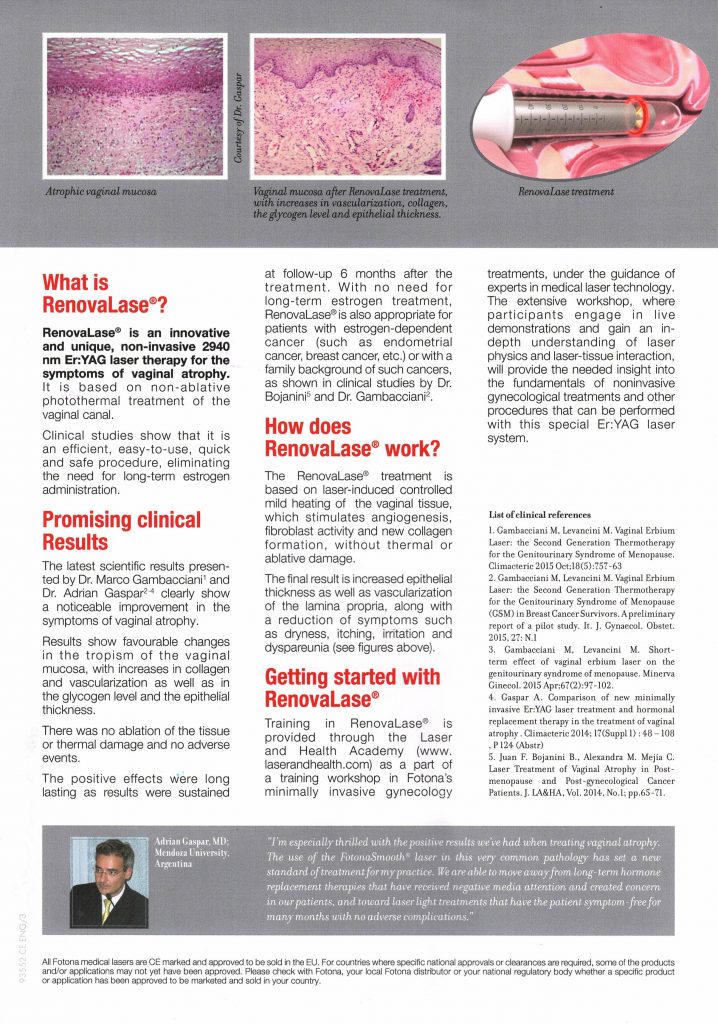How exactly does laser technology helps to “rejuvenate”, tighten the vagina or improve stress urinary incontinence?
A non-ablative Erbium YAG (Er:YAG) laser is used to produce thermal effects in the vaginal tissue which stimulates collagen remodelling and the synthesis of new collagen fibres, thus restoring the elasticity of the connective structures of the vaginal wall and tightening of vaginal canal. The treatment is non-invasive and the unique, patented 360 degree robotic arm ensures the uniform and accurate treatment of the whole vagina. The procedure has no downtime and is done as an outpatient procedure.
Among Singapore women, what are the most common risk factors for lax vaginal muscles as well as vaginal atrophy? How common are these conditions among Singapore women?
The vagina is designed to be able to relax and tighten repeatedly without loss of tone or tissue elasticity. During sexual arousal and childbirth, hormones cause the vaginal muscles to relax. While frequent sex does not loosen the vagina, there are limitations to the elasticity of the vagina.
The most common cause of vaginal laxity is natural childbirth. Vaginal laxity can diminish both partners’ sense of satisfaction from sexual contact, leading to lowered self-esteem and drop in sexual intimacy. Multiple vaginal births and trauma to the vaginal canal during childbirth increases the risk of vaginal laxity.
In my practice, I notice that come form of female sexual dysfunction is reported by mothers one year after childbirth including vaginal laxity, insufficient lubrication, abnormal vaginal sensation and even incontinence during intercourse.
Finally, age can hamper the recovery of the vagina to its pre-pregnancy tightness. So a young mother in her 20s is more likely to recover her vaginal tightness within a year of having her first child, whereas women having children later in life, with multiple births or having more significant injury during childbirth are at greater risk of experiencing vaginal laxity that extends beyond the first 2 months after birth.
The most common cause of vaginal atrophy is menopause, which most women go through in their mid fifties. Before menopause, the oestrogen a woman’s ovaries make keep the skin of the vagina healthy and supple and also stimulates vagina secretions. After menopause, the ovaries stop making oestrogen which causes the walls of the vagina to lose volume and suppleness and vaginal secretions are reduced. About 75 percent of post-menopausal women experience some degree of vaginal atrophy.
In recent years, have you noticed more women seeking help/ requesting treatment for vaginal atrophy as well as issues such as lax vaginal muscles? Please share what the estimated increase has been like in for example, the last decade?
Most of my patients do not talk about the loss of sexual satisfaction due to atrophy or vaginal laxity unless they are asked about it. The topic of sex is still a taboo in our society but it is an important aspect of a couple’s relationship. Based on an overseas report, approximately 40% report dissatisfaction concerning their ability to achieve sexual gratification due to vaginal laxity or atrophy, which interferes with the intensity of contact during sexual intercourse. Laser treatment enhances flexibility and contraction of the vaginal wall so we can expect better sensation and “feel” when having intercourse. Men have their little blue pill for erectile dysfunction so why shouldn’t women seek help to enhance their sexual satisfaction with laser treatment?
Traditionally (and before laser treatments existed),what is usually prescribed to treat such conditions mentioned above? what are the limitations/ risks of such treatments?
If the symptoms are mild and limited to dryness they may be relieved by using a water-soluble vaginal lubricant during intercourse.
Kegel exercises can be done immediately following childbirth. Kegels are an isometric exercise involving the contraction of the vaginal wall/ pelvic floor muscles. However one must maintain the exercises over a period of time to be able to reap its benefits.
For very severe damage to the vaginal walls and/or pelvic floor, vaginoplasty might be required. Vaginoplasty is a reconstructive procedure for the vaginal canal and its mucous membrane and of vulvovaginal structure that are damage due to childbirth. However this is an invasive procedure which carries its own risks such as scarring, bleeding and infection in addition to requiring a long period of recovery.
For women where menopause is a cause of vaginal atrophy, Hormone Replacement Therapy (HRT) may be prescribed to increase the whole body’s oestrogen levels. Although HRT is generally considered safe and effective by doctors, some women worry about the long-term risks of taking it. They may prefer topical or localised HRT such as vaginal tablets, creams, rings and pessaries which only supply oestrogen to the vaginal area without increasing the amount in the blood stream. However women with a personal or family history of oestrogen and progestogen-related cancers may need to avoid using any form of HRT. For women who can’t or don’t want to use HRT, laser treatment offers an alternative which may help to relieve some of their symptoms. It may also be a useful adjunct treatment for women using HRT and lubricants.
I understand that vaginal rejuvenation procedures using lasers are gaining traction in Singapore. What proportion of patients of seeking these treatments are younger, premenopausal women under the age of 50? What are the factors spurring them to seek treatment?
In the past most women think that vaginal laxity comes naturally with pregnancy, childbirth and is part and parcel of the ageing process. Most think they cannot do anything about the symptoms such as decreased sexual satisfaction and stress urinary incontinence so they suffer in silence. Now women are better informed and they know that they have to do regular Kegel exercises to maintain their pelvic floor tone or hormonal treatment if they suffer from vaginal atrophy. However if that does not help laser treatment is an effective option.
INCONTILASE

PROLAPSE

RENOVALASE









